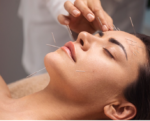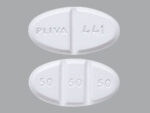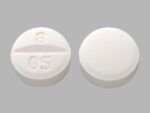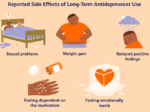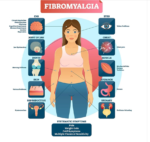A headache is a pain or discomfort in the head or upper neck area. It is one of the most common medical complaints, and it can range from mild to severe in intensity. Headaches can have various causes, and they are classified into different types based on their characteristics, symptoms, and underlying factors. Headaches are an exceedingly prevalent ailment that the majority of individuals will encounter on numerous occasions throughout their lifetimes. The primary indication of a headache is discomfort localized in the head or facial region. Numerous varieties of headaches exist, with tension headaches emerging as the most widespread. Although the majority of headaches are not indicative of severe threats, specific types can serve as indicators of potentially critical underlying health issues.
Although the majority of headaches are generally benign, specific types can serve as indicators of more serious underlying medical conditions and you must go to emergency. What Kind of Headaches Are Dangerous ?
How Many Types of Headaches Are There ?
There exist over 150 distinct types of headaches, broadly categorized into two primary groups: primary and secondary headaches.
Primary Headaches
Primary headaches are a category of headaches that are not caused by an underlying medical condition or external factor; rather, they are the primary medical problem themselves. These headaches are typically characterized by recurrent episodes and can be quite disabling. Some of the most common types of primary headaches include:
- Tension-Type Headaches (TTH): These are the most common primary headaches. Tension-type headaches are often described as a steady, dull, aching pain that affects both sides of the head. They can last for hours to days and are often triggered by stress, anxiety, or muscle tension.
- Migraines: Migraines are severe, often debilitating headaches characterized by throbbing pain, usually on one side of the head. Migraines are typically accompanied by other symptoms such as nausea, vomiting, and sensitivity to light and sound. Some individuals experience an aura, which is a set of visual disturbances that can precede the migraine.
- Cluster Headaches: Cluster headaches are rare but intensely painful. They occur in clusters or cycles and are known for their severity and the rapid onset of excruciating pain, often around one eye. Cluster headaches are sometimes referred to as “suicide headaches” due to their intensity.
- Trigeminal Autonomic Cephalalgias (TACs): This group includes headaches like trigeminal neuralgia and paroxysmal hemicrania, which are characterized by severe, sharp, stabbing pain around the eye or temple area. They are often accompanied by autonomic symptoms like tearing or redness of the eye on the affected side.
- Primary Exertional Headache: These headaches occur during or after physical exertion, such as exercise, and are often described as throbbing or pulsating.
- Primary Stabbing Headache: These are characterized by sudden, sharp, and stabbing pains that are typically very brief but intense.
- Primary Cough Headache: These headaches are triggered by coughing, sneezing, or straining and can be quite severe, but they usually last for a short duration.
- Primary Thunderclap Headache: Thunderclap headaches are sudden, severe headaches that reach their maximum intensity within seconds to minutes. They can be indicative of serious conditions and require immediate medical attention.
Primary Headache Triggers
Certain primary headaches can be triggered by lifestyle factors or specific situations. These triggers may include:
- Alcohol: Especially red wine, which can precipitate headaches in susceptible individuals.
- Certain Foods: Processed meats containing nitrates are known to trigger headaches in some people.
- Nicotine: Smoking or using nicotine-containing products can lead to nicotine headaches.
- Sleep Changes: Alterations in sleep patterns, including insufficient sleep or oversleeping, can trigger headaches in some individuals.
- Poor Posture: Maintaining an incorrect posture, especially for extended periods, may contribute to tension-type headaches.
- Physical Activity: Strenuous physical activities or exercise can induce exertion headaches.
- Skipping Meals: Missing meals or experiencing significant delays between meals can result in hunger headaches.
- Physical Straining: Coughing, sneezing, straining during bowel movements, or laughing or crying vigorously can lead to primary cough headaches.
While primary headaches are generally not life-threatening, they can indeed be exceptionally painful and disruptive to daily life. It’s advisable to seek medical evaluation and appropriate management if you experience frequent or severe primary headaches, as there are treatment options available to alleviate the discomfort and improve your quality of life.
Secondary Headaches
Secondary headaches are a category of headaches that occur as a symptom or result of an underlying medical condition or external factor. Unlike primary headaches, which are the primary medical problem themselves, secondary headaches are secondary to another condition. Identifying and addressing the underlying cause of secondary headaches is essential for effective treatment. Here are some common causes and examples of secondary headaches:
- Infection: Headaches can be a symptom of various infections, including sinusitis, meningitis, and encephalitis. The headache is often accompanied by other signs of infection, such as fever and neck stiffness.
- Head Injury: Traumatic head injuries, such as concussions, can lead to secondary headaches. These headaches may develop immediately after the injury or weeks to months later.
- Medication Overuse: Overusing pain relievers or certain medications, such as opioids, can result in medication-overuse headaches (also known as rebound headaches).
- Caffeine Withdrawal: Sudden cessation of caffeine consumption in individuals who are accustomed to it can lead to withdrawal headaches.
- Dehydration: Lack of proper hydration can cause dehydration headaches, which are characterized by a dull, throbbing pain.
- Eye Problems: Eye conditions like glaucoma or eye strain can lead to headaches.
- Neck or Spine Issues: Problems with the cervical spine or neck muscles, such as cervical spondylosis or muscle tension, can cause secondary headaches.
- High Blood Pressure: Hypertension (high blood pressure) can trigger headaches, particularly if it’s severe or uncontrolled.
- Vascular Disorders: Conditions like temporal arteritis or intracranial bleeding disorders can result in secondary headaches.
- Dental Issues: Dental problems, including teeth grinding or temporomandibular joint disorder (TMJ), can lead to headaches.
- Brain Tumors: While rare, brain tumors can cause persistent headaches, often accompanied by other neurological symptoms.
- Hormonal Changes: Hormonal fluctuations, such as those related to the menstrual cycle, menopause, or pregnancy, can lead to secondary headaches in some individuals.
- Substance Abuse: Substance abuse, particularly alcohol or drugs, can lead to headaches as part of withdrawal symptoms or the direct effects of the substances.
- Neurological Conditions: Conditions like multiple sclerosis, strokes, or intracranial hemorrhage can result in secondary headaches.
- Carbon Monoxide Poisoning: Exposure to carbon monoxide can lead to headaches, along with other symptoms like dizziness and confusion.
Secondary headaches are diverse and can arise from various medical conditions, so a thorough evaluation by a healthcare provider is essential to determine the underlying cause and provide appropriate treatment. Management of secondary headaches often involves addressing the root issue or condition contributing to the headache.
Types of Secondary Headaches That Aren’t Necessarily Dangerous
there are secondary headaches that are not necessarily dangerous and tend to resolve once the underlying condition is addressed. Some examples include:
- Dehydration Headache: These headaches occur due to inadequate hydration and can often be relieved by drinking sufficient fluids to rehydrate the body.
- Sinus Headaches: These headaches are associated with sinusitis or sinus congestion and typically improve once the underlying sinus issue is treated.
- Medication Overuse Headaches (Rebound Headaches): These headaches result from overusing pain relievers or certain medications, such as opioids. They tend to improve when the medication is discontinued and managed appropriately under medical guidance.
It’s important to note that while these types of secondary headaches are generally not considered dangerous, they can still cause significant discomfort and impact your quality of life. Proper management, which may include addressing the underlying cause or adjusting medications, can help alleviate the headache and prevent its recurrence.
Dangerous Secondary Headaches
Certain types of secondary headaches can serve as warning signs of serious or potentially life-threatening conditions. It is essential to be aware of these headache types and seek prompt medical attention if you experience them. Some of these alarming secondary headache types include:
- Thunderclap Headaches: Thunderclap headaches are sudden and intensely severe headaches that reach their maximum intensity within a very short period, often within seconds to minutes. They can be indicative of critical conditions such as a subarachnoid hemorrhage (bleeding in the space around the brain), ischemic stroke, reversible cerebral vasoconstriction syndrome (a blood vessel disorder) or a sudden, severe rise in blood pressure.
- Spinal Headaches: These headaches occur following procedures like spinal taps or epidurals, where cerebrospinal fluid leaks from the spinal cord’s surrounding membrane. If left untreated, they can potentially lead to subdural hematomas (collections of blood on the brain) or seizures.
- Post-Traumatic Headaches: Headaches following a head injury, especially if they worsen over time or are accompanied by neurological symptoms like confusion, dizziness, or loss of consciousness, may indicate a traumatic brain injury that requires immediate medical evaluation.
- Headaches with Focal Neurological Symptoms: Headaches accompanied by focal neurological symptoms such as weakness on one side of the body, vision changes, difficulty speaking, or loss of coordination may be associated with serious conditions like strokes or brain tumors.
- Exertion Headaches with Neurological Symptoms: Exertion headaches that occur during strenuous physical activity and are associated with neurological symptoms like changes in vision, confusion, or loss of consciousness require urgent medical assessment.
- Headaches with Severe Hypertension (High Blood Pressure): Extremely high blood pressure can lead to severe headaches, and if not promptly managed, it can result in life-threatening conditions such as hypertensive crisis or stroke.
- Headaches Following Head or Neck Trauma: Any headaches following significant head or neck trauma should be taken seriously and evaluated to rule out potential serious injuries.
If you experience any of these types of secondary headaches or if you have concerns about your headache symptoms, it is essential to seek immediate medical attention.
Symptoms of A Headache
Symptoms of a headache can vary depending on the type and underlying cause of the headache. However, some common symptoms associated with headaches include:
- Pain: Pain is the hallmark symptom of a headache. The pain can range from mild to severe and can be described as throbbing, sharp, dull, or aching. The location of the pain may also vary depending on the type of headache.
- Location: The location of the pain can provide clues about the type of headache. For example, migraines often involve pain on one side of the head, while tension-type headaches typically affect both sides.
- Duration: Headaches can be brief, lasting for a few minutes or hours, or they can be prolonged, lasting for days or even weeks. The duration can also vary depending on the type of headache.
- Frequency: Some people experience headaches infrequently, while others have them regularly or even daily.
- Intensity: The intensity of the pain can range from mild discomfort to severe and debilitating pain.
- Associated Symptoms:
- Nausea and Vomiting: Many people with headaches, especially migraines, experience nausea and may vomit during an episode.
- Sensitivity to Light (Photophobia): Bright lights or sunlight can worsen headache symptoms for some individuals.
- Sensitivity to Sound (Phonophobia): Loud noises or certain sounds can exacerbate headache pain.
- Sensitivity to Smells (Osmophobia): Strong odors or perfumes can trigger or worsen headaches in some cases.
- Visual Disturbances (Aura): Some individuals with migraines experience visual disturbances, known as an aura, which can include flashing lights, zigzag lines, or blind spots.
- Nasal Congestion or Runny Nose: Sinus headaches are often accompanied by congestion or a runny nose.
- Tearing or Redness of the Eye: Cluster headaches may cause tearing or redness of one eye.
- Triggers: Identifying triggers that precede or worsen headaches can provide valuable information for diagnosis and management. Common triggers can include stress, certain foods, hormonal changes, weather changes, and more.
- Relief Measures: Some people find relief from their headaches by resting in a dark, quiet room, applying cold or warm compresses, or taking over-the-counter pain relievers.
It’s important to note that there are many different types of headaches, and individual experiences can vary widely. If you experience recurrent or severe headaches, it is advisable to seek medical evaluation to determine the type of headache, identify any underlying causes, and receive appropriate treatment or management.
What Headache Symptoms Require Immediate Medical Care?
seeking immediate medical care is essential if you or your child experience any of the following headache symptoms:
- A Sudden, New, and Severe Headache: The sudden onset of a severe headache, particularly if it’s different from your usual headache, can be a warning sign of a serious condition such as a subarachnoid hemorrhage (bleeding around the brain) or other underlying issues.
- Headache with Fever, Shortness of Breath, Stiff Neck, or Rash: A headache accompanied by these symptoms can be indicative of meningitis, a potentially life-threatening infection of the membranes surrounding the brain and spinal cord. Prompt medical evaluation is crucial.
- Headaches Following a Head Injury or Accident: Any headache that occurs after a head injury, especially if it worsens over time or is accompanied by symptoms like confusion, dizziness, or loss of consciousness, should be assessed promptly to rule out a traumatic brain injury.
- Getting a New Type of Headache After Age 55: If you or someone you know develops a new type of headache after the age of 55, it is important to seek medical evaluation. New-onset headaches in older adults can sometimes be associated with underlying conditions like temporal arteritis, which requires prompt diagnosis and treatment.
If you experience a headache accompanied by neurological symptoms, it’s imperative to seek immediate medical care. These symptoms can be indicative of serious underlying conditions, and prompt evaluation is crucial. Neurological symptoms associated with a headache may include:
- Weakness: Sudden weakness on one side of the body or in specific limbs can be a sign of a stroke or other neurological disorder.
- Dizziness: Severe dizziness, particularly if it’s associated with other neurological symptoms, requires immediate evaluation to rule out serious causes.
- Sudden Loss of Balance or Falling: An abrupt loss of balance or falling without an obvious cause should be assessed by a healthcare provider, especially if it occurs in conjunction with a headache.
- Numbness or Tingling: Numbness or tingling sensations, especially if they affect specific body parts, can be related to neurological issues.
- Paralysis: Sudden paralysis or inability to move certain body parts is a medical emergency and requires immediate attention.
- Speech Difficulties: Difficulty speaking, slurred speech, or the inability to speak coherently can be indicative of a stroke or other neurological disorders.
- Mental Confusion: Sudden confusion, disorientation, or altered mental status can signal various medical conditions, including neurological issues.
- Seizures: Seizures, especially if they are not part of a known seizure disorder, require immediate medical evaluation.
- Personality Changes/Inappropriate Behavior: Sudden changes in personality, behavior, or mood can be associated with neurological conditions and should be assessed by a healthcare provider.
- Vision Changes: Changes in vision, such as sudden blurry vision, double vision, or the development of blind spots, can be related to neurological or ocular issues and require urgent evaluation.
These neurological symptoms, when combined with a headache, can be alarming and may indicate serious conditions like strokes, brain tumors, or other neurological disorders. Do not delay seeking medical care in such situations, as early diagnosis and intervention are critical for the best possible outcomes.
What Are the Reasons of a Headache ?
Headache pain arises from a complex interplay of signals involving the brain, blood vessels, and surrounding nerves. When various mechanisms are triggered, they activate specific nerves that influence the dilation and constriction of blood vessels, as well as the sensation of pain. These activated nerves then send pain signals to the brain, resulting in the perception of a headache. Understanding these mechanisms can be helpful in managing and treating headaches effectively.
Headaches can have various causes, and the specific reason for a headache can vary depending on the type and underlying factors. Here are some common reasons for headaches:
- Tension: Tension-type headaches are often caused by muscle tension, stress, or emotional factors. They can result from factors like poor posture, jaw clenching, or overexertion of neck and shoulder muscles.
- Migraines: The exact cause of migraines is not fully understood, but they are believed to involve changes in brain chemicals and blood vessels. Migraines can be triggered by various factors, including certain foods, hormonal changes, stress, and sensory stimuli.
- Cluster Headaches: The cause of cluster headaches is not well understood, but they are thought to be related to abnormalities in the hypothalamus, a part of the brain. They can be triggered by alcohol, high-altitude environments, and smoking.
- Sinusitis: Inflammation or infection of the sinus cavities can lead to sinus headaches. The pain is often in the forehead, cheeks, and nose area.
- Medication Overuse: Overuse of pain relievers, including over-the-counter drugs, can lead to medication-overuse headaches or rebound headaches.
- Dehydration: Inadequate hydration can result in dehydration headaches, which are typically characterized by a dull, throbbing pain.
- Caffeine Withdrawal: Suddenly stopping caffeine consumption in individuals who are accustomed to it can lead to caffeine withdrawal headaches.
- Hormonal Changes: Hormonal fluctuations, such as those related to menstruation, pregnancy, or menopause, can trigger hormonal headaches, including menstrual migraines.
- Weather Changes: Changes in weather conditions, such as shifts in barometric pressure or extreme temperatures, can trigger weather-related headaches.
- Physical Activity: Strenuous physical activities or exercise can lead to exertion headaches.
- Eye Strain: Prolonged periods of reading, staring at screens, or engaging in other visually demanding activities can result in eye strain headaches.
- Neck and Spine Issues: Problems with the cervical spine or neck muscles, such as cervical spondylosis or muscle tension, can cause tension-type headaches.
- High Blood Pressure: Hypertension (high blood pressure) can trigger headaches, especially if it’s severe or uncontrolled.
- Food and Beverages: Certain foods and beverages, such as processed meats containing nitrates, red wine, and foods containing monosodium glutamate (MSG), can be headache triggers in some individuals.
- Environmental Factors: Strong odors, loud noises, and bright lights can trigger headaches in sensitive individuals.
- Underlying Medical Conditions: Headaches can be a symptom of various underlying medical conditions, including infections, neurological disorders, and vascular problems.
- Genetics: Family history can play a role in the likelihood of developing certain types of headaches, such as migraines.
Is there a Genetic Link to Headaches?
Headaches often have a hereditary component, particularly migraines. It’s common for children with migraines to have at least one biological parent who also suffers from them. In fact, kids whose parents experience migraines are up to four times more likely to develop them.
Additionally, environmental factors within a family’s household can trigger headaches, including:
- Consumption of specific foods or ingredients like caffeine, alcohol, fermented foods, chocolate, and cheese.
- Exposure to allergens.
- Secondhand smoke.
- Strong odors from household chemicals or perfumes.
How are Headaches Evaluated and Diagnosed?
The evaluation and diagnosis of headaches typically involve a comprehensive assessment by a healthcare provider, often a primary care physician or a neurologist. The process includes several key steps:
- Medical History: The healthcare provider will begin by taking a detailed medical history, including the patient’s description of their headaches, their frequency, duration, location, and associated symptoms. Information about family history and any potential triggers or patterns is also important.
- Physical Examination: A physical examination may be conducted to check for signs of underlying medical conditions, such as neurological abnormalities or signs of sinusitis.
- Neurological Examination: A thorough neurological examination may be performed to assess reflexes, sensation, coordination, and other neurological functions.
- Headache Diary: Keeping a headache diary can be valuable. Patients may be asked to record details about their headaches, including when they occur, the intensity of pain, any triggers or patterns, and any medications or treatments used.
- Imaging: In some cases, imaging studies like computed tomography (CT) scans or magnetic resonance imaging (MRI) may be ordered to rule out structural issues in the brain, such as tumors or vascular abnormalities. These are typically reserved for cases with atypical symptoms or concerning findings.
- Laboratory Tests: Blood tests may be ordered to check for underlying medical conditions, such as infections or metabolic disorders.
- Specialized Tests: Depending on the suspected type of headache, specialized tests may be conducted. For example, if a migraine is suspected, a visual field test may be performed to assess for visual disturbances.
- Questionnaires: Patients may be asked to complete questionnaires or scales designed to assess headache frequency, severity, and impact on daily life.
- Discussion of Triggers: The healthcare provider will discuss potential headache triggers, including lifestyle factors, dietary habits, stressors, and environmental factors.
- Diagnosis: Based on the information gathered from the history, physical examination, and any necessary tests, the healthcare provider will make a diagnosis. Headache diagnoses are often categorized into primary headaches (e.g., tension-type headaches, migraines) and secondary headaches (e.g., those caused by underlying medical conditions).
- Treatment Plan: Following diagnosis, a treatment plan will be developed. This plan may include lifestyle modifications, medications, stress management techniques, and other therapies tailored to the specific type of headache and its underlying causes.
It’s essential to communicate openly and honestly with your healthcare provider, providing as much detail as possible about your headaches. This information is critical for an accurate diagnosis and the development of an effective treatment plan to manage and reduce headache symptoms.
What Tests Will be Done to Diagnose Headaches?
The tests conducted to diagnose headaches will vary depending on the specific symptoms and clinical presentation. In many cases, the diagnosis of common primary headaches, such as tension-type headaches or migraines, can be made based on a thorough medical history and physical examination alone, without the need for extensive testing. However, in certain situations where there are atypical symptoms or concerns about underlying conditions, healthcare providers may order additional tests. Here are some of the tests that may be considered:
- Neurological Examination: A comprehensive neurological examination assesses reflexes, sensation, coordination, muscle strength, and other neurological functions. This helps rule out neurological issues.
- Imaging Studies:
- CT Scan (Computed Tomography): CT scans may be used to rule out structural abnormalities, such as tumors or bleeding in the brain. They are often ordered in cases of severe or sudden-onset headaches.
- MRI (Magnetic Resonance Imaging): MRI scans provide detailed images of the brain and can help detect abnormalities or structural issues. They are typically used when there is concern about underlying neurological conditions.
- Blood Tests: Blood tests may be ordered to check for underlying medical conditions, such as infections, metabolic disorders, or inflammation.
- Lumbar Puncture (Spinal Tap): In certain situations, a lumbar puncture may be performed to analyze cerebrospinal fluid (CSF). This is more commonly done when there is suspicion of conditions like meningitis or other neurological disorders.
- Electroencephalogram (EEG): EEG measures electrical activity in the brain and may be used if there are concerns about seizures or other abnormal brain activity.
- Visual Field Testing: Visual field tests can help assess vision-related symptoms and detect visual disturbances that may be associated with certain types of headaches, such as migraines with aura.
- Sinus Imaging: In cases of suspected sinus headaches, imaging of the sinuses (e.g., sinus X-rays or CT scans) may be ordered to evaluate for sinusitis or other sinus-related issues.
- Allergy Testing: If allergies are suspected as a trigger for headaches, allergy testing may be recommended.
- Hormone Testing: In cases where hormonal factors are suspected, hormone testing may be performed, especially in women with menstrual migraines.
How is a Headache Treated?
The treatment of headaches depends on the type of headache, its severity, and its underlying causes. Here are some common approaches to treating headaches:
- Lifestyle Modifications:
- Identifying Triggers: Identifying and avoiding headache triggers, such as specific foods, beverages, or environmental factors, can be a key part of managing headaches.
- Stress Management: Stress reduction techniques like relaxation exercises, deep breathing, and mindfulness meditation can help reduce tension and prevent stress-related headaches.
- Regular Sleep Patterns: Maintaining a regular sleep schedule and getting an adequate amount of sleep can help prevent headaches.
- Hydration: Ensuring proper hydration by drinking enough water throughout the day can prevent dehydration headaches.
- Over-the-Counter (OTC) Pain Medications:
- Non-prescription pain relievers like acetaminophen (Tylenol), ibuprofen (Advil, Motrin), or aspirin can be effective in managing mild to moderate tension-type headaches.
- Overuse of these medications should be avoided to prevent medication-overuse headaches.
- Prescription Medications:
- Migraine Medications: For migraines, prescription medications such as triptans (e.g., sumatriptan), preventive medications (e.g., beta-blockers, antiepileptic drugs), and medications specifically designed for migraines (e.g., CGRP inhibitors) may be prescribed.
- Tension-Type Headache Medications: For tension-type headaches, muscle relaxants or certain antidepressants may be prescribed.
- Cluster Headache Medications: Cluster headaches may be treated with high-flow oxygen therapy, sumatriptan, or preventive medications.
- Other Types of Headache Medications: Medications can be prescribed based on the specific diagnosis and underlying causes of other types of headaches.
- Behavioral Therapies:
- Cognitive-behavioral therapy (CBT) and biofeedback techniques can be effective for managing headache pain, especially for chronic tension-type headaches and migraines.
- Alternative Therapies:
- Some individuals find relief from headaches through complementary and alternative therapies such as acupuncture, chiropractic care, or herbal supplements. Consult with a healthcare provider before trying these approaches.
- Medical Procedures:
- In cases of severe, refractory headaches, medical procedures such as nerve blocks or injections may be considered.
- Surgical options are rare and typically reserved for specific conditions.
- Management of Underlying Conditions:
- If the headache is secondary to an underlying medical condition, treating that condition may alleviate the headache.
It’s essential to work with a healthcare provider to determine the most appropriate treatment plan based on the type and frequency of your headaches, as well as any underlying medical conditions.
How is a Headache Prevented?
reventing headaches often involves identifying and avoiding triggers, making lifestyle modifications, and, in some cases, taking preventive medications. Here are strategies for preventing headaches:
- Identify Triggers:
- Keep a headache diary to track when and where your headaches occur, as well as potential triggers like certain foods, stressors, or environmental factors.
- Common triggers can include specific foods (e.g., chocolate, cheese, processed meats), caffeine, alcohol, stress, hormonal changes, and environmental factors (e.g., strong odors, loud noises).
- Lifestyle Modifications:
- Stress Management: Learn stress-reduction techniques such as relaxation exercises, deep breathing, yoga, or mindfulness meditation to minimize stress-related headaches.
- Sleep Hygiene: Maintain a regular sleep schedule and ensure you get enough quality sleep. Poor sleep patterns can trigger headaches.
- Dietary Changes: Avoid known trigger foods and beverages. Maintain a balanced diet and stay hydrated.
- Regular Exercise: Engage in regular physical activity to reduce the frequency and severity of tension-type headaches. However, excessive strenuous exercise can trigger exertion headaches in some individuals.
- Hydration: Stay adequately hydrated by drinking plenty of water throughout the day.
- Avoid Overusing Medications:
- Overuse of over-the-counter pain relievers or prescription medications can lead to medication-overuse headaches. Use these medications as directed by a healthcare provider.
- Caffeine Management:
- If you consume caffeine regularly, consider gradual caffeine reduction if you suspect it’s a trigger. Abruptly stopping caffeine intake can lead to caffeine withdrawal headaches.
- Manage Hormonal Changes:
- For individuals with hormonal headaches, such as menstrual migraines, hormonal management strategies may include birth control methods or hormone replacement therapy.
- Stay Consistent:
- Maintain a consistent daily routine, including consistent meal times, sleep patterns, and exercise schedules.
- Limit Alcohol and Smoking:
- Reduce alcohol consumption, as it can trigger headaches in some individuals.
- If you smoke, consider quitting or reducing smoking, as smoking is associated with an increased risk of headaches.
- Environmental Modifications:
- Identify and minimize exposure to environmental triggers, such as strong odors, loud noises, or flickering lights.
- Medications:
- If you experience frequent or severe migraines, cluster headaches, or other debilitating headache types, your healthcare provider may prescribe preventive medications. These medications are taken regularly to reduce the frequency and severity of headaches.
- Behavioral Therapies:
- Cognitive-behavioral therapy (CBT) and biofeedback techniques can be beneficial in managing and preventing headaches, especially for tension-type headaches and migraines.
- Regular Check-Ups:
- Maintain regular follow-up appointments with your healthcare provider to monitor your headache management and adjust treatment as needed.
Preventing headaches often involves a combination of lifestyle modifications, stress reduction, and sometimes medications.
Biofeedback for Headache
Biofeedback is a therapeutic technique that empowers individuals to become more aware of their body’s physiological responses to stress and pain. It helps individuals recognize tension as it builds and teaches them to self-regulate and manage their physical responses. Here’s how biofeedback works:
- Sensor Placement: During a biofeedback session, sensors or electrodes are attached to various parts of the body, depending on the specific physiological responses being monitored. Common sensor placements include the fingers, scalp, or skin.
- Monitoring Physiological Responses: The sensors continuously measure and provide real-time feedback on specific physiological responses, which can include:
- Breathing Rate: Monitoring respiratory patterns to detect shallow or rapid breathing.
- Pulse: Measuring the heartbeat or pulse rate.
- Heart Rate: Monitoring heart rate variability and heart rate patterns.
- Temperature: Measuring skin temperature, which can change with stress or relaxation.
- Muscle Tension: Assessing muscle activity and tension, particularly in the forehead or shoulders.
- Brain Activity: Using electroencephalography (EEG) to measure brainwave patterns and identify changes in brain activity.
- Visualization and Feedback: The information collected by the sensors is processed and presented to the individual through visual or auditory cues, such as computer screens, audio tones, or graphical displays. This feedback helps individuals observe their physiological responses in real time.
- Self-Regulation Training: With the assistance of the biofeedback therapist, individuals learn specific relaxation and self-regulation techniques. These techniques can include deep breathing exercises, progressive muscle relaxation, meditation, and mindfulness practices.
- Practice and Skill Development: Through repeated practice and guidance from the therapist, individuals develop the ability to voluntarily control and modify their physiological responses. They learn to recognize when tension or stress is increasing and employ relaxation techniques to reduce these responses.
- Home Practice: Many individuals are encouraged to practice the techniques learned during biofeedback sessions at home to reinforce their skills and maintain progress.
Biofeedback is often used as a complementary therapy for managing various conditions, including tension-type headaches, migraines, chronic pain, anxiety, and stress-related disorders. It can empower individuals to better control their body’s responses to stress and pain, potentially reducing the frequency and severity of headaches and promoting overall well-being.
How to Relieve Your Headache Naturally ?
Natural headache relief strategies can be effective for many people and are often preferred because they involve minimal or no medication. For more naturedly treatment methods please check top 10 naturally Migraine management methods and What Kinds of Nutrition and Nature Products Can Relieve Pain ?
Here are several natural ways to relieve a headache, with detailed explanations:
- Hydration:
- Why It Works: Dehydration can contribute to headaches. Ensuring you’re adequately hydrated helps maintain proper blood flow and can reduce headache symptoms.
- How to Do It: Drink plenty of water throughout the day. Aim for at least eight glasses (64 ounces) daily, but individual needs may vary.
- Caffeine:
- Why It Works: Caffeine, in moderation, can constrict blood vessels and alleviate headaches. It’s also an ingredient in some over-the-counter headache medications.
- How to Do It: Consume a small amount of caffeine, such as a cup of coffee or tea. Avoid excessive caffeine, as it can lead to rebound headaches.
- Peppermint Oil:
- Why It Works: Peppermint oil has a soothing effect and may help relax muscles in the head and neck, potentially reducing tension headaches.
- How to Do It: Dilute a few drops of peppermint oil in a carrier oil (e.g., coconut or almond oil) and apply it to your temples and the base of your neck. Gently massage.
- Ginger:
- Why It Works: Ginger has anti-inflammatory properties and can help reduce headache pain, especially migraines.
- How to Do It: Make ginger tea by steeping fresh ginger slices in hot water. Drink this tea to alleviate headache symptoms.
- Aromatherapy:
- Why It Works: Certain essential oils, like lavender and eucalyptus, have calming and soothing properties that can relieve headache-related tension.
- How to Do It: Inhale the aroma of essential oils using a diffuser, or add a few drops to a bowl of hot water and inhale the steam.
- Cold Compress:
- Why It Works: Applying a cold compress can constrict blood vessels and reduce blood flow to the head, easing headache pain.
- How to Do It: Wrap ice cubes in a cloth or use a cold pack and apply it to your forehead or the back of your neck for 15-20 minutes.
- Heat Therapy:
- Why It Works: Heat can help relax tense muscles, making it particularly effective for tension-type headaches.
- How to Do It: Apply a warm compress or heating pad to your neck or shoulders. Use a comfortable, warm, not hot, temperature.
- Acupressure:
- Why It Works: Acupressure involves applying pressure to specific points on the body to relieve pain and tension.
- How to Do It: Apply gentle pressure to the “Yintang” point between your eyebrows and the “Hegu” point between your thumb and index finger. Hold each point for about 30 seconds.
- Relaxation Techniques:
- Why It Works: Stress and tension can trigger headaches. Relaxation techniques help reduce stress and muscle tension.
- How to Do It: Practice deep breathing, progressive muscle relaxation, or guided imagery regularly to relax your body and mind.
- Regular Sleep and Sleep Hygiene:
- Why It Works: Maintaining a consistent sleep schedule and practicing good sleep hygiene can help prevent headaches triggered by sleep disturbances.
- How to Do It: Aim for 7-9 hours of quality sleep per night. Create a comfortable sleep environment by keeping your room cool, dark, and quiet.
Remember that headache triggers and effective relief methods can vary from person to person. It may be helpful to keep a headache diary to track your symptoms, triggers, and the effectiveness of different natural remedies.

Pain Medications, Pain Relief, and Pain Management

